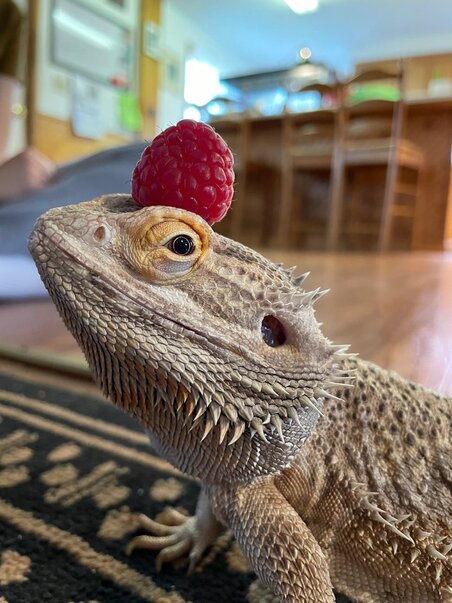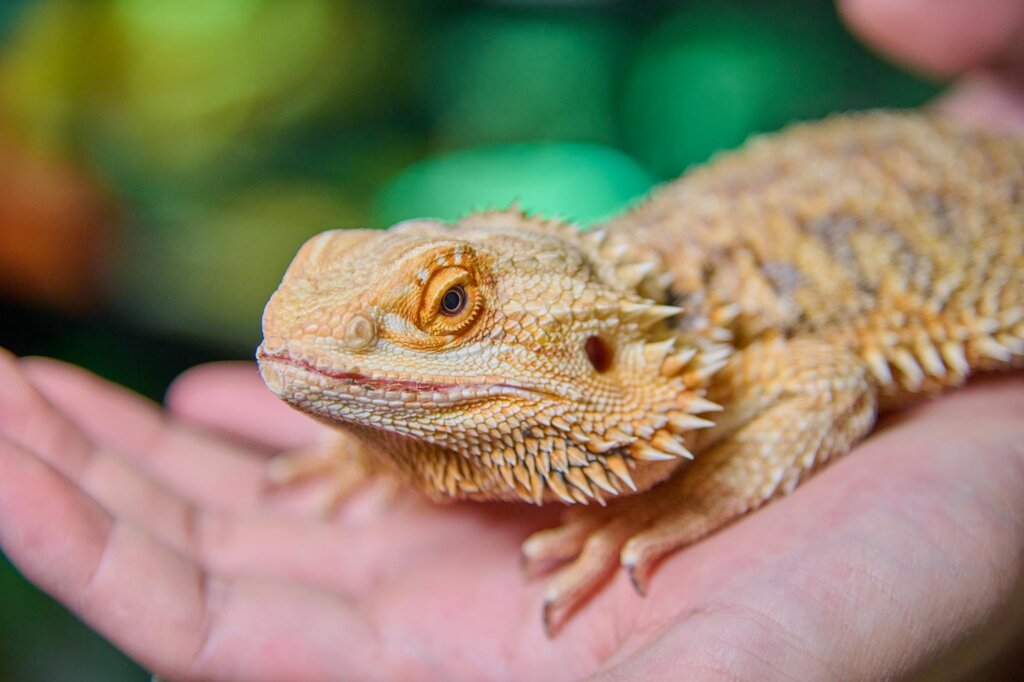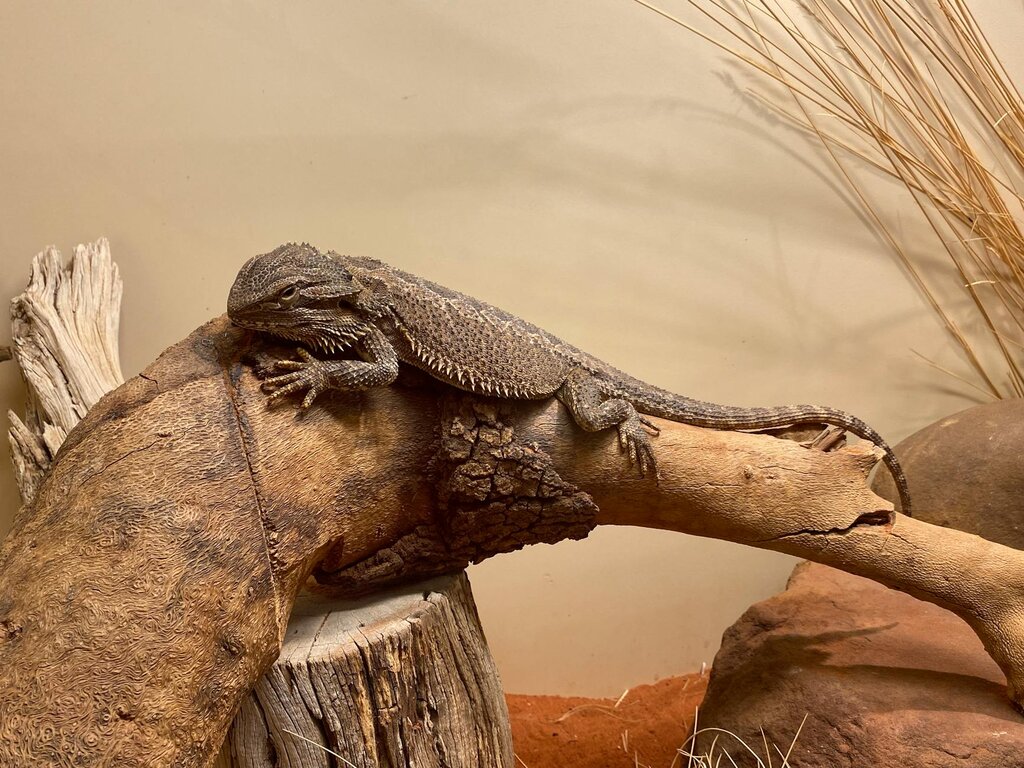Handling your bearded dragon
Regular, gentle handling is the key to helping your lizard feel comfortable being handled, reducing the likelihood of them becoming stressed. This is particularly important when lizards are juveniles, as positive handling experiences will increase the likelihood that they are good to handle as they grow. Bearded dragons can be handled up to twice a day, but ensure that each session does not last longer than your dragon's comfort. In the beginning, handling sessions should last no more than 10 minutes. Always wash your hands thoroughly before and after each handling session, and separate handling sessions from feeding sessions.
Signs of comfort include slow, deliberate movements, and gentle head bobs as they investigate their new environment.
Never allow children or people inexperienced with reptiles to handle your lizard unsupervised, as injury or escape may occur. They can be surprisingly fast when they're worried!
Natural sunlight for bearded dragons
Regular exposure to natural sunlight is good for all reptiles, and this can be a positive handling experience for you and your lizard! On sunny days where it is not too cold, it can be enjoyable to sit outside with your dragon and a good book. Ensure that your dragon can't get out of the area easily, and can't get away and hide or become lost. A small harness is a great option for larger dragons!
At least an hour a week is a good minimum for natural sunlight, and there's no such thing as too much natural sunlight for Australian reptiles.
Bearded dragon shedding
All dragons will shed regularly, and young animals may shed as often as every 3 weeks when they are growing rapidly. Signs that your lizard is going into shed include duller colouration and behavioural change such as hiding away, soaking in the water dish, or inappetance.
If it looks like your dragon is preparing to shed, the best thing to do is ensure that the water source has been freshly cleaned and refilled, ensure that the temperature is optimal, then leave your dragon alone until they have finished shedding. This includes stopping handling. Unlike snakes, lizards shed in pieces, and it is normal for shed skin to come off in large chunks.
After a shed, closely inspect your lizards fingers, toes, and tail for any retained pieces of shed, as these can start to constrict the appendage and cut off blood supply. If you are concerned, book an appointment with your vet, and you can soak your lizard in warm water for 10-20 minutes once to twice a day until then to see if it will help loosen the retained shed.
And finally...
The most important thing to remember when starting your reptile-keeping journey - enjoy! Reptiles are unique, interesting pets that have a lot of joy to give, and individuals will develop their own special personalities as time goes on. Bearded dragons are rewarding pets, and they often grow into impressive, charismatic adults.




